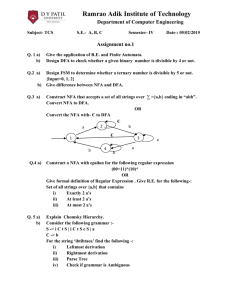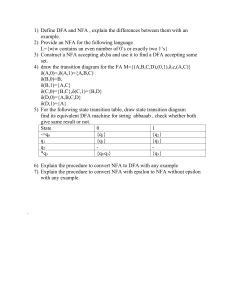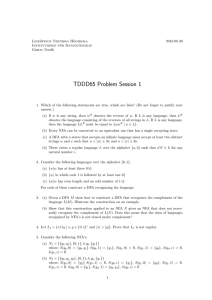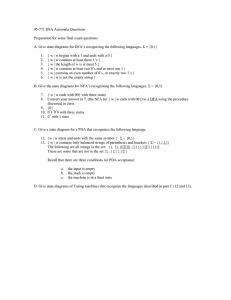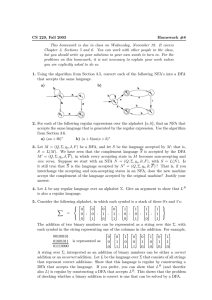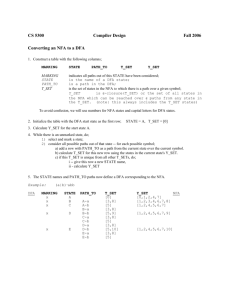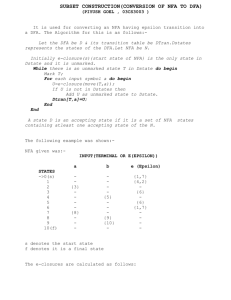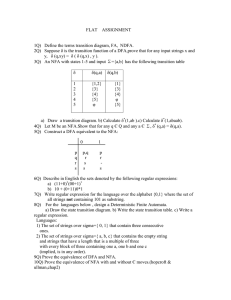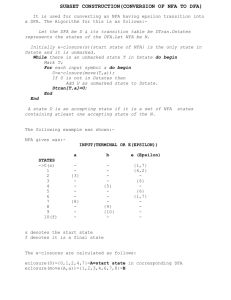#1 Give a regular expression for an identifier composed of letters
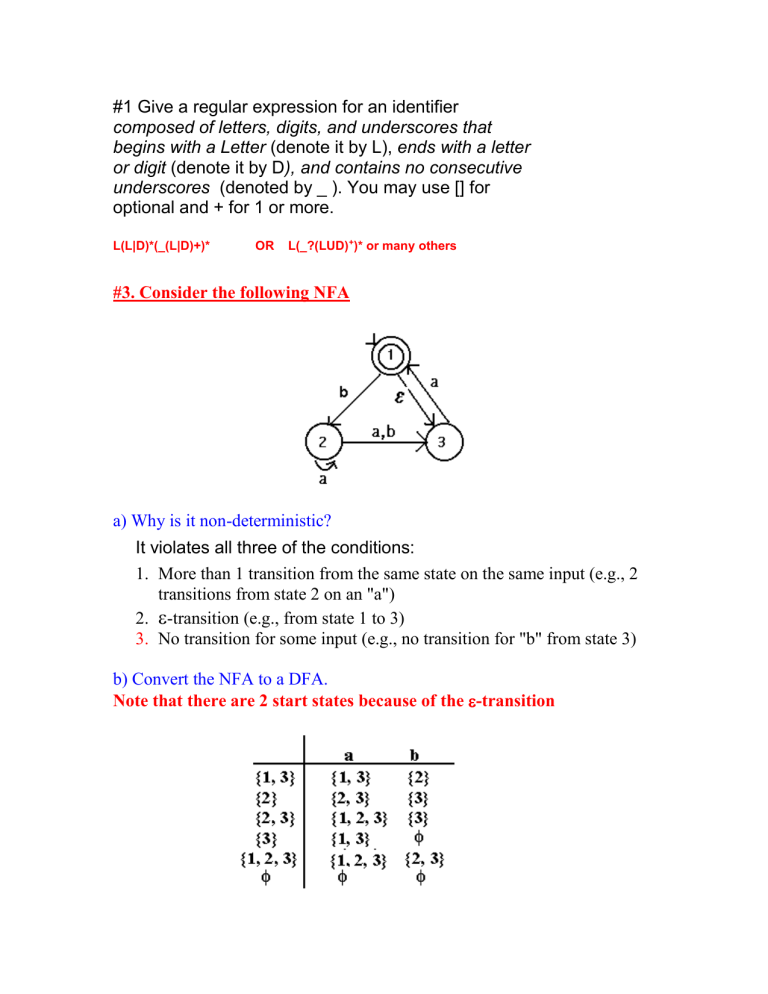
#1 Give a regular expression for an identifier composed of letters, digits, and underscores that begins with a Letter (denote it by L), ends with a letter or digit (denote it by D ), and contains no consecutive underscores (denoted by _ ). You may use [] for optional and + for 1 or more.
L(L|D)*(_(L|D)+)* OR L(_?(LUD) + )* or many others
#3. Consider the following NFA a) Why is it non-deterministic?
It violates all three of the conditions:
1.
More than 1 transition from the same state on the same input (e.g., 2
2.
transitions from state 2 on an "a")
-transition (e.g., from state 1 to 3)
3.
No transition for some input (e.g., no transition for "b" from state 3) b) Convert the NFA to a DFA.
Note that there are 2 start states because of the
-transition
which
{1,3} and {1,2,3} are final states because they contain state 1
was final in the original. c) Minimize the dfa from #2
Separating final from non final (and
):
State {3} is different from {2} and {2,3} because on reading a “b”, it transitions to
Now looking at the two states in partition I we see they go to different partitions on reading an “a”, so they are different. AND now the 2 states in partition II will be different because they go to different states on reading a “b”.
So the original dfa was already minimal!:
BUT, if you had {1} as your start state you would be able to minimize. d) What is L(M) for all three machines (it should be the same (or equivalent) for all three! )
I found it easier to find the regular expression from the original nfa:
L(M) = a* U a*ba* (a U b)a + or something equivalent (regular expressions are not unique).


